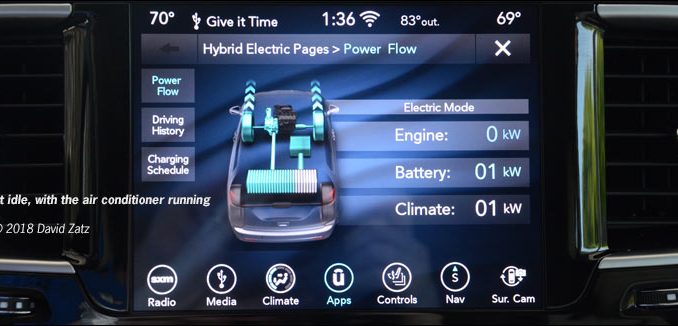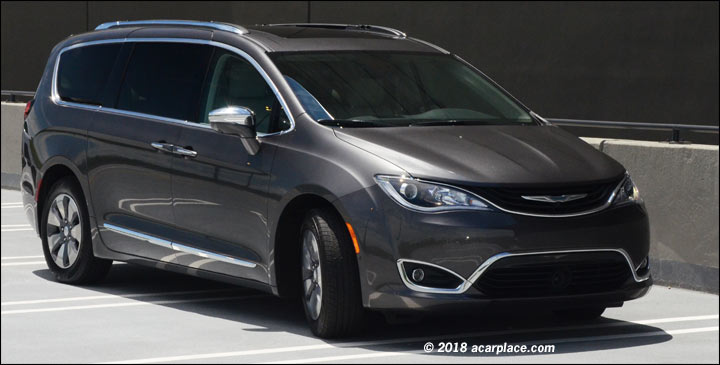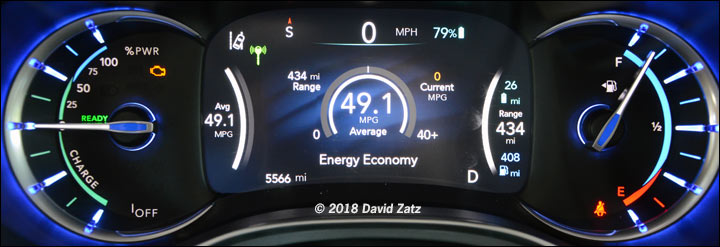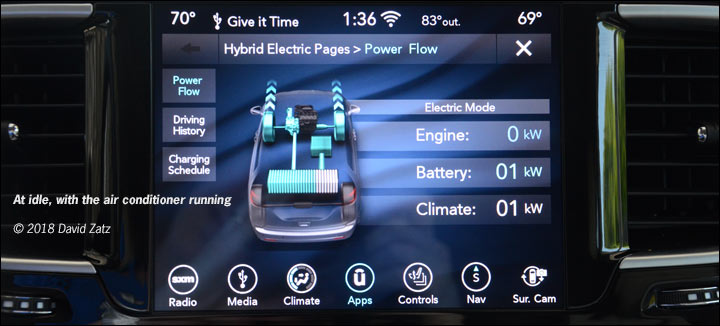
It’s big enough to hold a dozen 4-by-8 slabs of plywood, or seven adults and their groceries, with strong acceleration from any gear or speed. Oh, and it’s rated at 84 mpg(e).

This wonder machine is the Pacifica Hybrid, a marvel that Chrysler set loose on the world as its first plug-in hybrid, not to mention the world’s first hybrid-electric minivan (though not Chrysler’s first electric minivan, since they made full-electrics in the ’90s).
The Pacifica takes the global minivan gas-mileage crown, even if you never charge it up from your power outlets. The same system is going into a bunch of vehicles, from the Renegade on up; Ram and Wrangler already have hybrids coming. Even if you don’t care about minivans, then, you may care about the Pacifica Hybrid as the shape of things to come. That’s one reason why this is a series, not a single article.
FCA’s first-ever plug-in electric powertrain
The Atkinson-cycle engine is noisier than a normal V6, but more efficient; they’re usually not used, except with electric motors, because of performance issues. The 260 horsepower rating is below the ordinary Pacifica’s 287, but its 266 pound-feet of torque come on fast — electric motors have peak torque at 0 rpm. The minivan’s sprint times may or may not beat a gasoline Pacifica, but it reacts more quickly on the highway.

The primary electric motor provides surprisingly brisk acceleration, more than most people call for; at just 50% power (with the engine off), you’ll probably be the fastest one away from the light. If you make sudden movements while under electric drive, the engine kicks on, and stays on for 30 seconds to two minutes, in case it’ll be needed. Once you’ve driven your 34-or-so all-electric miles and switched to “ordinary hybrid” mode — and the engine is at its normal operating temperature — it’ll go on and off as needed. If the engine is running and there’s little or no load, it’ll charge the battery, as the regenerative brakes do while you’re coasting or braking. If you’ve just started up and have a charge, the engine seems to idle very noisily for a while.

When I first got the Pacifica Hybrid, the battery was at zero, making it an ordinary (as opposed to plug-in) hybrid for all intents and purposes; the city/highway combined EPA rating under these conditions is 32 mpg, which is well above the normal Pacifica’s highway mileage (28 mpg) much less its city figure. In traffic situations that included getting onto a highway and then through a long slow merge and doing photo shoots, mileage dropped to 24 mpg, the same as my 1.4 Dart Aero in the same conditions (but with much more power). On the highway, at 65 mpg, it produces good economy, but the faster you go, the lower the mileage drops.

The EPA claims, under electric power, 84 MPGe, while the trip computer gave us roughly 55-60 mpg. The cost to drive 25 miles on electricity is $1.30, or $2.28 on gasoline — versus $3.32 for a standard Pacifica. Based on traveling 15,000 miles per year, with 55% city driving, the EPA figures that the Pacifica Hybrid can save you around $1,200 per year over an ordinary Pacifica — but your mileage may vary! (That doesn’t include savings on brake jobs, and the cost for power varies from place to place.)
The Caravan moves quickly from a stop, because of its gearing; so does the Pacifica, Hybrid or not, but the Hybrid uses less fuel when it gets going, and can also bring instant response when you’re moving at 60 mph, regardless of the gear. The 89 kW electric motor kicks in first, and if needed, the gasoline engine helps out. Most of the time, electricity is all you need, even accelerating uphill with the a/c on. (As I wrote this story from the driver’s seat, I enjoyed having the air conditioner on, with the engine off. There’s no shortage of cooling when on battery, though it uses 2,000 watts to keep it going — comparable to my office air conditioner.)

The electric power is designed to go full blast until you run out of battery for it (after you hit 0%, there is still power in the battery, but it’s ordinary hybrid reserve). That means you can rapidly accelerate to, and drive at, 65 mph on pure electric power, with the air conditioner on. The gasoline engine stays off when you’re at traffic lights, even if you inch forward a bit (it has a simulated automatic-transmission crawl).
The motor operates with a loud whir, and the brakes are audibly evident as well; a display in the 8.4” stereo screen can tell you the engine and battery output (or input, if it’s charging). That’s sometimes the only indication that the engine is on or off.
The transmission is a CVT with two integrated motors; it moves smoothly, without the artifacts of older CVTs. As with all new CVTs, the programming makes them seem more like conventional automatics. Brake fade is prevented with regenreative braking when you go down steep hills, so there’s no low gear. The only rough edge of this system is that, as you slow down to a crawl or to a stop, you might hear some mild crackling noises from the powertrain, and it might shake a little as you cross a speed threshold when you go very slowly or come to a stop. Overall, though, this is a surprisingly well-sorted-out powertrain, in my experience.
Next time: Who’d have thought it could handle so well, or park itself?

David Zatz has been writing about cars and trucks since the early 1990s, including books on the Dodge Viper, classic Jeeps, and Chrysler minivans. He also writes on organizational development and business at toolpack.com and covers Mac statistics software at macstats.org. David has been quoted by the New York Times, the Daily Telegraph, the Detroit News, and USA Today.

So, how should I be driving to achieve something close to what Chrysler claims?